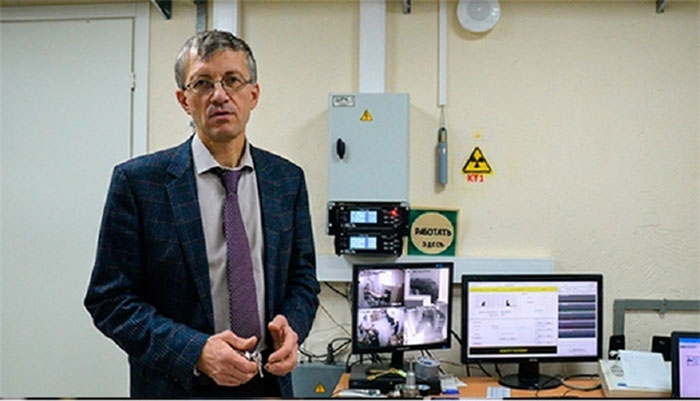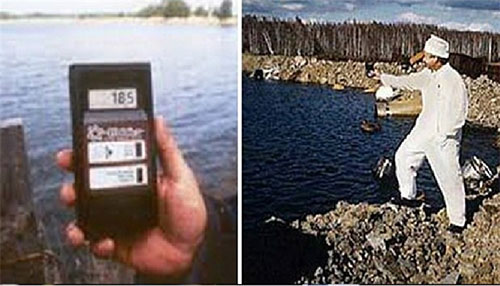Nuclear energy is a complex field of science, leading to many misconceptions about it in public opinion.
Common Misconceptions About Nuclear Energy That We Encounter in Daily Life
- Misconception 1: Swimming, mushroom picking, or foraging near nuclear power plants is dangerous
- Misconception 2: If a nuclear power plant has an accident, radioactive dust will cover surrounding residential areas
- Misconception 3: All radiation is artificial
- Misconception 4: Granite-paved roads are a source of radiation
- Misconception 5: X-rays are very harmful to health
- Misconception 6: Drinking iodine will effectively protect oneself from radiation
- Misconception 7: In the event of a nuclear war, humans will burrow underground to survive, and nature will be destroyed
Nuclear energy remains a mystery to many in the public. Given that this is a complex field of science, with many difficult theories and potential dangers if not used correctly, numerous misconceptions about it have emerged in public discourse.
Associate Professor Dr. Vladimir Ivanov, a physicist and head of the Experimental Physics Department at the Federal University of Russia, has explained some of these misconceptions.
Misconception 1: Swimming, mushroom picking, or foraging near nuclear power plants is dangerous
Dr. Ivanov stated that the emissions and environmental impact of nuclear power plants are strictly controlled, both theoretically and experimentally in Russia and internationally. From his perspective, the situations mentioned above are not dangerous beyond normal levels.
This fear may stem from various realities; in the early stages of Russia’s nuclear power industry, when experimental nuclear power plants (AES) were operational, the effects of radiation on the environment and humans had not been thoroughly studied, and the waste from those plants was managed in ways that are now unacceptable.
At times, radioactive waste was directly dumped into nearby water bodies without regard for its ecological impact, as the Soviet Union was urgently focused on completing the nuclear program.

Associate Professor Dr. Vladimir Ivanov.
A real case is the Mayak nuclear materials plant, which discharged radioactive waste into Lake Karachay, leaving it contaminated to this day. Currently, measures have been taken to mitigate this by constructing concrete embankments to prevent the spread of radioactive dust, while maintaining a certain water level to prevent the lake bed from drying out.
However, these issues are remnants of the past. Modern nuclear power plants are managed and monitored closely. For example, at the Beloyarsk nuclear power plant, the water released is only warmer than the clean water outside, with all radioactive elements at very low levels that can be disregarded.
Foraging for mushrooms or fruits around the power plant, if it poses any risk, is purely psychological. According to Dr. Ivanov, it is even safer than picking fruit near a highway, as pollutants from burning gasoline accumulate in the soil and bioaccumulate in the fruits of trees growing there.
Misconception 2: If a nuclear power plant has an accident, radioactive dust will cover surrounding residential areas
Today, the safety of nuclear power plants is closely monitored and constantly improved. In the event of a steam explosion (similar to the Chernobyl incident), radioactive materials could disperse like chlorine gas during a chemical plant explosion. However, in reality, this scenario is nearly impossible today due to stringent management and multiple protective structures surrounding the reactor. For instance, a 1,000 MW reactor today is protected by a concrete containment structure over 2 meters thick, with an additional 32 cm thick steel liner inside. Therefore, incidents like Chernobyl cannot occur with modern reactor designs.

Lake Karachay, considered the most polluted lake in the world due to years of radioactive waste from the Mayak plant.
Even in the case of a radioactive leak accident, such as the one at the Mayak plant in Kyshtym in 1957, the prevailing wind patterns have been modeled to ensure that radioactive materials are not blown into large residential areas but rather into forests or wilderness areas.
Misconception 3: All radiation is artificial
This is entirely incorrect. Radioactive isotopes of all elements have always existed. When the Earth formed, unstable radioactive materials concentrated in the core, producing background radiation in the form of gamma rays. No matter where we are, whether outside or indoors, we are exposed to gamma radiation from the ground, from the walls around us, and even from outer space. Over time, Earth’s background radiation has been gradually decreasing, meaning that our ancestors were subjected to much higher levels of radiation than we are today.
Misconception 4: Granite-paved roads are a source of radiation
This misconception is based on the fact that any type of natural stone contains a certain amount of radioactive material. Some stones contain more than others.
Granite is one of the stones that contains higher levels of radiation. Therefore, if we base it on a background radiation level of 0.1 microsieverts/hour, standing on a granite-paved road would expose a person to radiation three times higher than this background level (0.3 microsieverts/hour). However, this level is still very low and does not affect human health.
Some regions of the world have much higher background radiation levels; for example, the Kerala region in the state of Madras, India, has a background radiation level of approximately 20 microsieverts/hour, which is 200 times the normal level.
Modern building materials have also been tested for radon content. Common building materials like wood and fired bricks are completely safe, while even cement poses a slight risk as it is made from crushed stone. Claims that building houses with bricks leads to cancer due to radiation, if they occur, are likely due to the natural background radiation already present in that construction area.
Misconception 5: X-rays are very harmful to health
While it cannot be said that X-rays are completely harmless, as the impact of radiation passing through the body cannot be without effect, this is also true for ultrasounds and MRI scans. However, the level of harm from these procedures is very minimal, as confirmed by numerous research studies in physics and medicine.

The city of Nagasaki in 1970 had returned to being a bustling place, just 25 years after being bombed with atomic bombs.
On the other hand, techniques such as X-rays allow for a very quick analysis of many pathological factors. You can immediately see how many bones you have fractured, how your limbs are misaligned, and so on.
In fact, with a small exposure dose, there are cases where radiation can create beneficial effects. In Russia and many Eastern European countries, there is a form of therapy known as radon bathing, which has quite a few positive effects on the human body.
There are rumors that drinking a glass of red wine immediately after an X-ray will neutralize the harmful effects of X-rays. Generally speaking, this is not entirely incorrect.
When ionizing radiation such as X-rays passes through the body, it generates a certain amount of free radicals. Grape varieties, especially red wine, have antioxidant properties that can capture harmful free radicals, so they may have some effect to a certain extent.
However, it is best not to consume too much alcohol. Moreover, in daily life, there are many phenomena that generate free radicals in the body, such as during storms, close contact with high-voltage charged objects, or even traveling by airplane. When flying, depending on the altitude, flight direction, and duration, you may be exposed to a dose of about 4 to 80 microsieverts, equivalent to one dental X-ray.
Misconception 6: Drinking iodine will effectively protect oneself from radiation
We are discussing the protective effect of iodine in the event of a nuclear accident. Indeed, during the initial moments of the Chernobyl nuclear power plant disaster, a large amount of radioactive iodine was released. Our bodies tend to accumulate iodine in the thyroid gland; if the thyroid is not saturated with iodine, it will absorb radioactive iodine from the environment. Therefore, there were recommendations for the public to use non-radioactive iodine to “fill up” the thyroid and prevent radioactive iodine from entering. A similar mechanism is used to block other radioactive isotopes such as cesium and strontium. However, each of these medications is only to be used in specific radiation accident situations; they are not “cure-alls” or something to take as a precaution, as they are completely ineffective against other forms of radiation exposure.
Misconception 7: In the event of nuclear war, humans will burrow underground to survive, and nature will be destroyed
Let’s consider a real example: The atomic bomb dropped on Nagasaki had a yield of 21 kilotons. Less than 30 years later, the city had returned to normal development and remains bustling to this day.
When the nuclear explosion occurred, it caused various destructive factors such as: Electromagnetic waves that destroyed communication systems, extremely strong gamma and neutron rays, shock waves, and a certain amount of radioactive contamination. However, the level of radioactive contamination was relatively small.
It can be said that in terms of the amount of radioactive material, a nuclear power plant accident can potentially cause more radioactive contamination than an atomic bomb.
It is not incorrect to say that when a nuclear war occurs, the dust kicked up into the atmosphere will reduce the amount of sunlight reaching the Earth and lower temperatures, causing a phenomenon known as “nuclear winter”. However, this phenomenon would only occur locally and for a short duration.
In Russian territory, hundreds of nuclear explosions have been carried out for economic purposes, such as expanding oil extraction areas. However, there has never been any report of these explosions causing widespread or long-lasting contamination.





















































